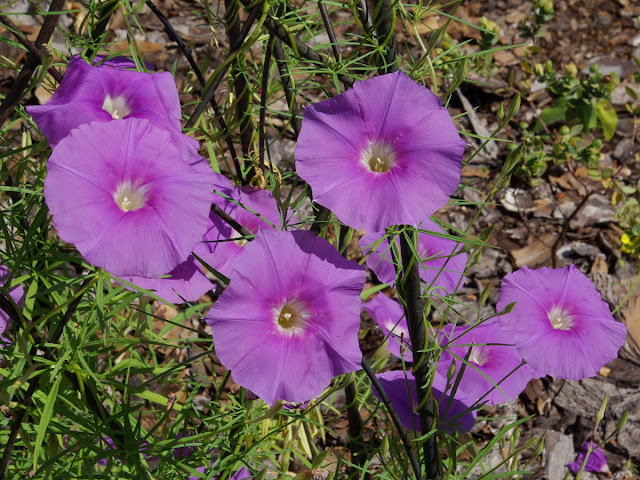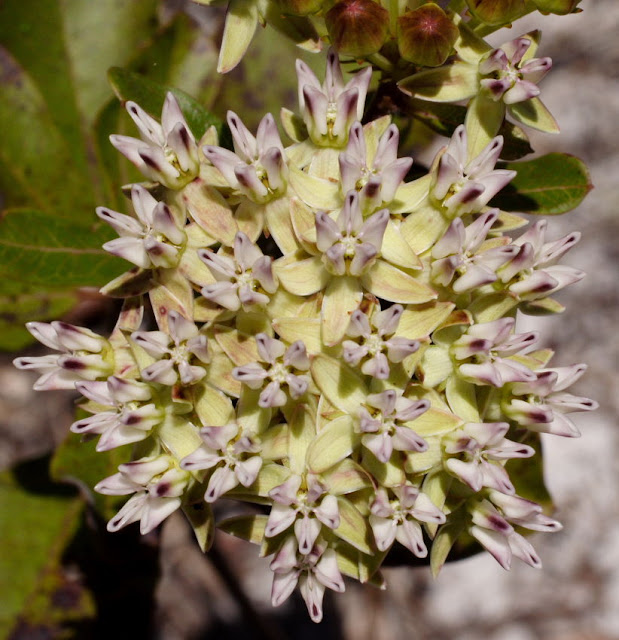Warning: Glycosmis parviflora has a very high potential of becoming an invasive pest plant. It should not be cultivated in the warm-temperate, subtropical, or tropical regions of the United States and all occurrences outside of cultivation should be promptly destroyed. It is included here only as an aid to identification and not to promote its cultivation in any way whatsoever.
 Young potted plant only 19 inches (0.5 meters) tall but freely flowering and fruiting.
Young potted plant only 19 inches (0.5 meters) tall but freely flowering and fruiting.
Glycosmis is a genus of approximately 50 species of unarmed shrubs or trees in the citrus family (Rutaceae) native to eastern, southern, and southeastern Asia, with a few species also in Australia. The genus can be distinguished from all other members of the citrus family in Florida, both native and introduced, by the following combination of traits: (1) plant unarmed and lacking spines; (2) fruit a fleshy berry; and (3) terminal and axillary buds, and often the young inflorescences, covered with tiny rust-colored hairs or scales.
 Close-up of an axillary bud covered with tiny rust-colored hairs.
Close-up of an axillary bud covered with tiny rust-colored hairs.
One species, Glycosmis parviflora (Sims) Little, has become established outside of cultivation in the United States, where it has been recorded from Broward and Miami-Dade counties and the Monroe County keys. Originally native to China, Taiwan, Japan, Myanmar, and northeast Vietnam (Dianxiang & Hartley 2008), it was introduced into the United States as a curiosity of ethnobotanical interest and as possible genetic material in the breeding of citrus fruits (Wiersema & León 1999:243). Plants identical to Glycosmis parviflora appear in a wide variety of internet sites under the name Glycosmis pentaphylla; however, every instance of Glycosmis pentaphylla that I have seen on the internet shows images of a plant with leaflets that have entire or slightly wavy margins, which are typical of Glycosmis parviflora. In contrast, Dianxiang & Hartley (2008) state that the leaflets of Glycosmis pentaphylla have toothed (serrated) margins.
 The species epithet, parviflora, means tiny flowers.
The species epithet, parviflora, means tiny flowers.
Glycosmis parviflora displays the following attributes that are associated with invasiveness: (1) Young plants are shade tolerant; (2) plants begin flowering and fruiting when less than two feet tall and less than three years of age; (3) plants are self-fertile and abundantly produce fruit, even when growing in isolation; (4) in warm regions, flowers and fruits are borne throughout the year; (5) relatively pest free; and (6) fruit dispersed by vertebrates (birds and mammals). Although it is not presently listed as an invasive plant, it should be watched closely and all occurrences outside of cultivation should be promptly destroyed.
References:
- Dianxiang, Z. and T.G. Hartley. 2008. In Z.Y. Wu, P.H. Raven, and D.Y. Hong (eds.) Flora of China: Volume 11. Science Press (Beijing) and Missouri Botanical Garden (St. Louis). Internet PDF
- Wiersema, J.H. and B. León. 1999. World Economic Plants: A Standard Reference. Boca Raton: CRC Press.
© 2010 Rufino Osorio.









